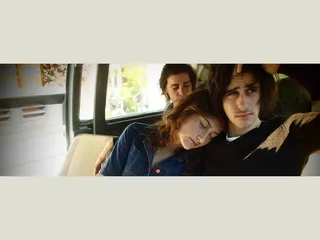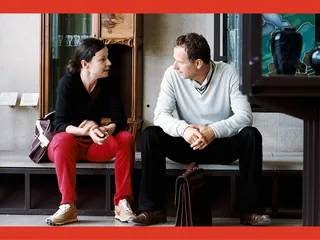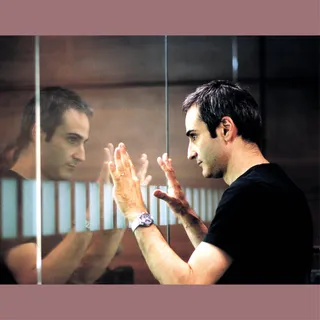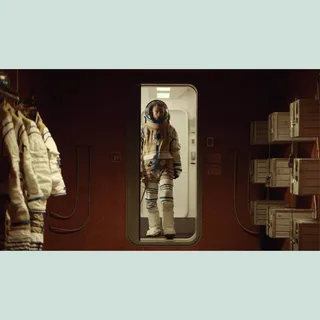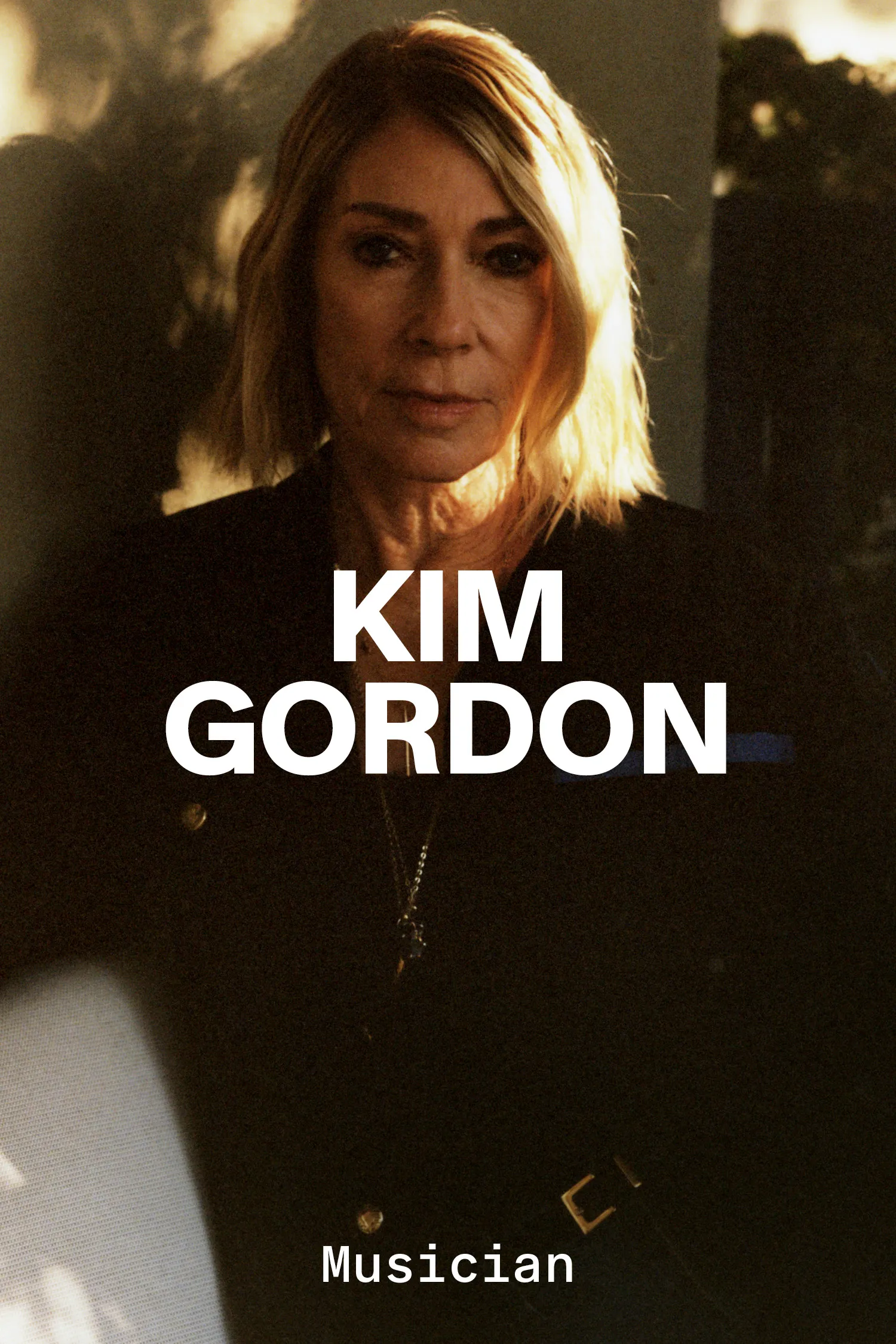Space Relations: FRANÇOIS-RENAUD LABARTHE
By Yonca Talu
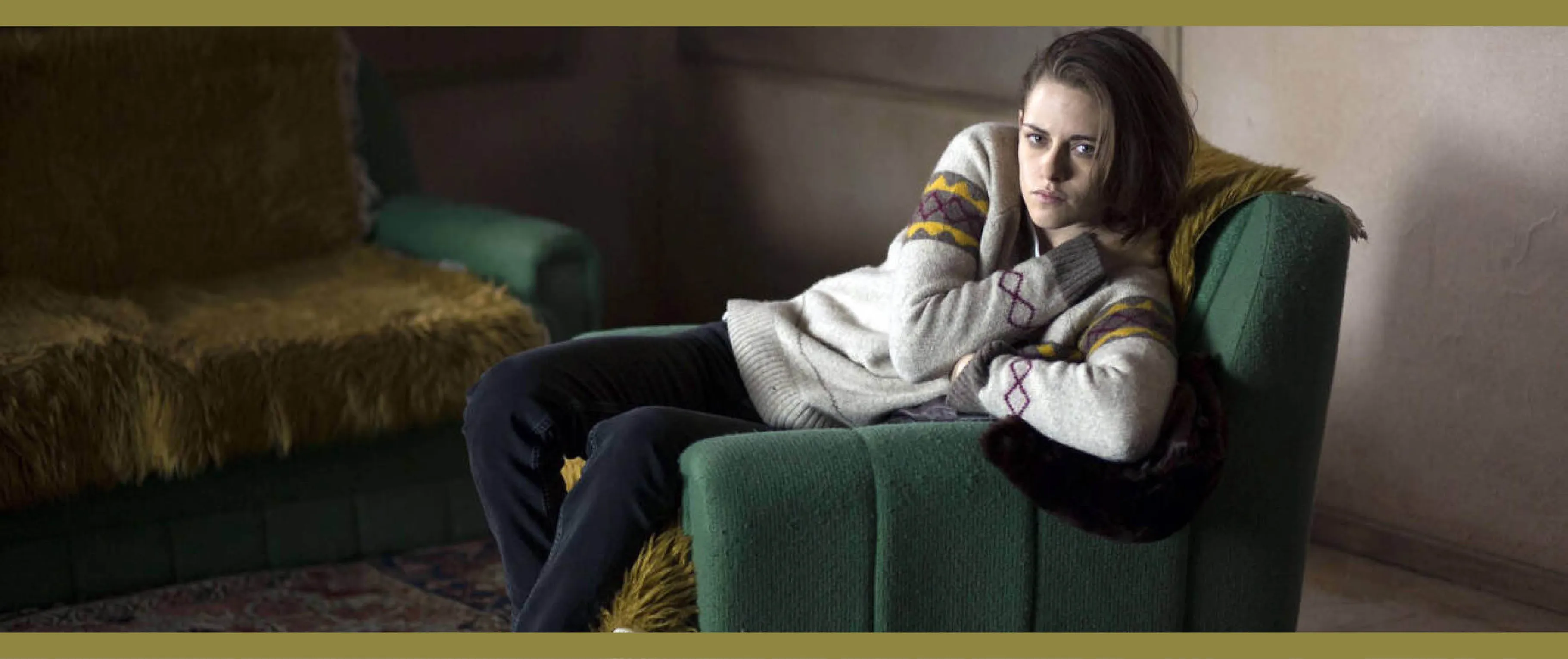
Personal Shopper, dir. Olivier Assayas, 2016
Space Relations
Production designer François-Renaud Labarthe on turning tablecloth sketches into historic apartments and trading-room floors
By Yonca Talu
April 16, 2024
‘‘He prefers freehand drawings to immaculate architectural plans,’’ says production designer François-Renaud Labarthe of the intuitive, stripped-down approach that has characterized his work with post–New Wave French filmmaker Olivier Assayas since the pair first joined forces in 1986. Whether he’s re-creating Assayas’s memories of ’70s counterculture in the autobiographical fiction Something in the Air (2012) or building corporate offices from scratch in the cyberthriller Demonlover (2002), what stands apart is Labarthe’s ability to define characters through precise stylistic choices, including paintings, furniture and electronic devices. Also known for his collaborations with Catherine Breillat, Alain Guiraudie and Claire Denis, the Paris-based Labarthe chatted with Galerie about his near-wordless communication with Assayas, the nuts and bolts of crafting domestic spaces and his dream of designing a sci-fi spaceship.
From left: Something in the Air, dir. Olivier Assayas, 2012; Summer Hours, dir. Olivier Assayas, 2008
You’ve been working with Olivier Assayas since his first feature, Disorder [1986], which charts the dissolution of a budding rock band.
Yes, it’s been far too long!
How did your partnership originate?
Well, Disorder was also my first feature as a production designer. I’m originally from Toulouse, where I studied economics and finance. But I didn’t pursue that career and headed to Paris after graduation. I literally arrived in the city with my small suitcase, like a character from a Balzac novel. [Laughs] I’d always been a cinephile, and I happened to have a friend at the IDHEC film school [now La Fémis] who was gearing up to shoot his graduation project. His production designer bailed on him at the last minute, so I stepped in as a replacement. And I really enjoyed the job.
I went on to do several short films, including Eric Barbier’s Le malheur dans une main [1985], which was a period piece set in a mining area in northern France. As it happens, Olivier saw that, and it appealed to him visually. So he said to his assistant director on Disorder, Claire Devers, ‘‘Get me this film’s production designer.’’ I’d been following Olivier’s work as a film critic at Cahiers du cinéma, and I’d been particularly fascinated by the magazine’s [1984] special issue on Hong Kong cinema, which he co-edited. So I was thrilled that he wanted to work with me on his first feature. But then I read the script and didn’t like it so much. And I didn’t pull any punches in my meeting with Olivier.
What did you say?
I said, ‘‘You know, I don’t have to agree with your script from start to finish for us to be able to work together.’’ I think he was offended. [Laughs] When I got home, I received a phone call from Claire, who said, ‘‘Olivier told me about your meeting. What’s the matter with you?’’ She was upset with me but agreed to get me another meeting with Olivier. This time I obviously did what was expected of me. I said to Olivier, ‘‘I’m sorry about the other day. I was drunk!’’

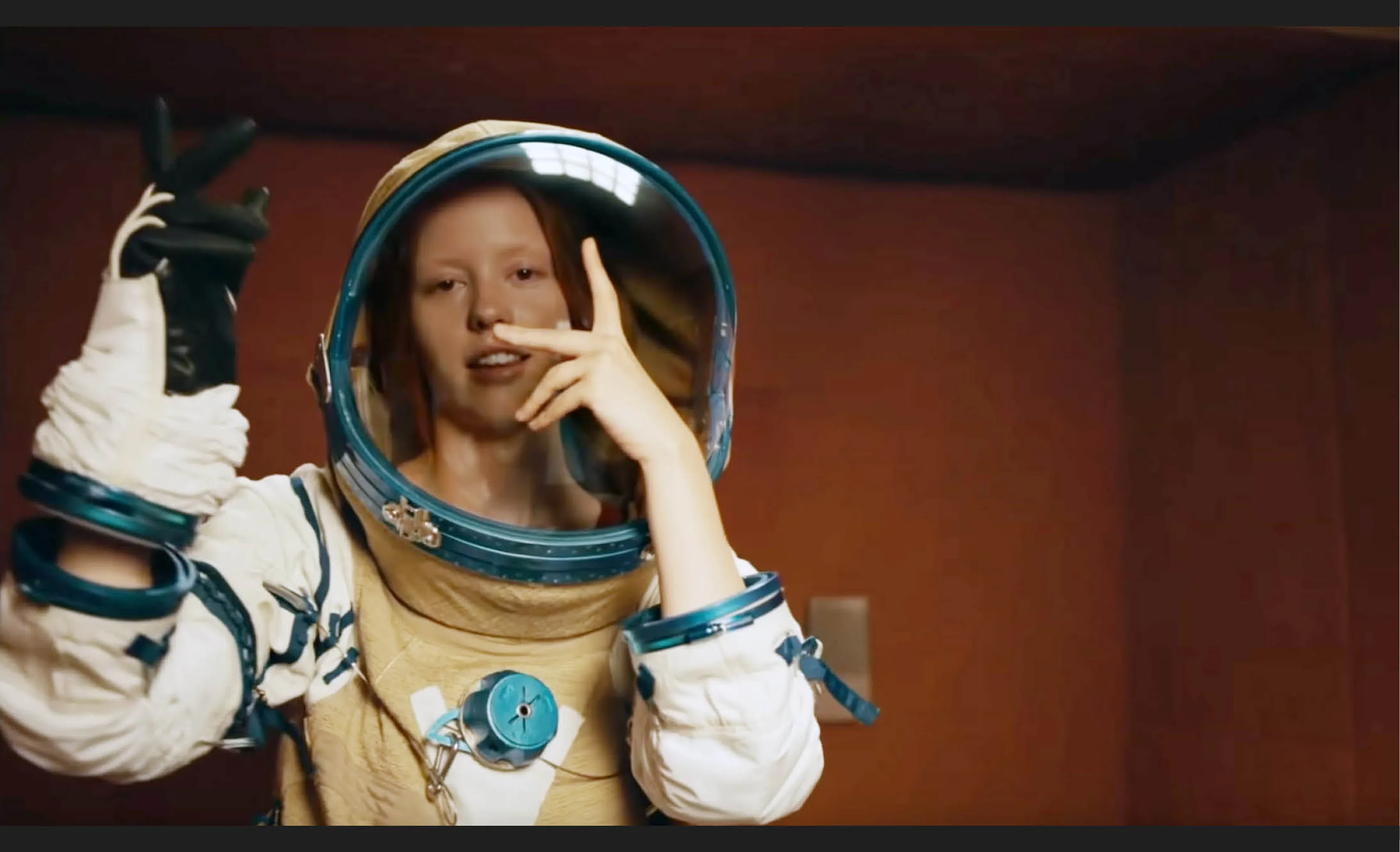
Clouds of Sils Maria, dir. Olivier Assayas, 2014
And how did you two collaborate on Disorder, which is quite a sophisticated debut?
Oh, I wouldn’t say that. I recently felt nostalgic and watched Disorder on DVD. The following day I saw Olivier and said, ‘‘Guess what I did yesterday. I watched Disorder.’’ And he said, ‘‘What’s gotten into you?’’ I said, ‘‘I don’t know. But to be honest, we weren’t very good back then.’’ And he said, ‘‘That’s the least you could say!’’ [Laughs] But to answer your question, Olivier and I have been collaborating the same way ever since Disorder. We don’t talk much about the production design. He trusts me with it and expects me to bring my own vision, which doesn’t mean he never questions my work. But he’s intelligent enough not to put his doubts on the table, and he likes to be surprised.
Was he more involved in the production design of Something in the Air, which is based on his own youth?
Not really. I think he was more interested in what I could bring to the table as someone who also experienced the ’70s. But he did show me some drawings and paintings he made in his youth as inspirations for those of the film’s protagonist, Gilles [Clément Métayer]. And I hired an artist, Diane Sorin, who created artworks in a similar [abstract expressionist] style. Then Olivier selected the ones that most resembled his work. But he didn’t give me any directions about how to re-create his childhood home and his father’s study.
So how did you go about that task?
I’d been to the Assayas family’s country house outside Paris, which is also where we shot Olivier’s latest film, Suspended Time [2024]. So I drew on what I’d seen there, as well as on what I knew about his father [screenwriter Jacques Rémy, aka Raymond Assayas]. Then, as per our ritual, I sketched a plan of the set with the furniture arrangement and shared it with Olivier. He needs that tool because it helps him create the shot list. But he prefers freehand drawings to immaculate architectural plans. It often happens that I’m sitting in a restaurant and Olivier calls me and says, ‘‘Listen, your team hasn’t sent me the plan for tomorrow’s set.’’ And I say, ‘‘Oh, they must have forgotten! I’m sorry. I’ll send it to you right away.’’ So I grab a pen and draw the furnished set on a corner of the restaurant’s tablecloth. Then I take a picture of the drawing with my iPhone and send it to Olivier. He looks at it, and when he arrives on set the following morning, he may ask me to move a piece of furniture.
The minimalist office set Labarthe designed for Clouds of Sils Maria in action
“...avant-garde ambitions and financial constraints go together pretty well!”
Speaking of furniture, I wanted to ask about the Musée d’Orsay pieces that are featured in Olivier Assayas’s family drama Summer Hours [2008]. It must have been inspiring to work with those.
It was. I especially liked the gilded Louis Majorelle desk [i.e., the ‘‘Orchid’’ desk, circa 1905-09]. We also had period pieces that weren’t from the Musée d’Orsay, like the zebra-skin Josef Hoffmann cabinet, which I found at an antiques dealer. That one was not my cup of tea, but Olivier fell for it. So I had to find a way to incorporate it into the family’s house. At first I was afraid it would look conspicuous and people would think, What the hell is this thing, and what is it doing here? But fortunately the film is very clear about why the family owns all those pieces of furniture.
Yes, their matriarch, Hélène (Edith Scob), inherited them from her painter uncle, Paul Berthier.
Yeah. It was such a fascinating process to create the work of that fictional painter.
Did you draw at all on the work of Olivier Assayas’s maternal grandfather, Hungarian painter Tibor Pólya?
Not at all. I don’t think Olivier even mentioned him. But we had discussions about what kind of painter we wanted Paul Berthier to be. And we explored different styles, including Pointillism, before we decided to go with something more traditional and accessible. Then Diane Sorin, whom I’ve already mentioned, created Berthier’s paintings and the exhibition catalog we see in the film. It also helped that the house where we shot was in Auvers-sur-Oise, where so many painters [like Vincent van Gogh and Paul Cézanne] lived and worked. I think films are deeply informed by the environment in which they’re set, whether it’s visible onscreen or not. So we were very lucky to find that house.
There’s an old house in many of Olivier Assayas’s films, including in Personal Shopper [2016], which revisits the haunted mansion trope in a Parisian setting.
That house was actually located in Prague. Although the film takes place in Paris, we didn’t have the budget to shoot everything there. So we ended up scouting houses in Prague, and when we saw the one in the film, we immediately felt it was right. It was empty and neglected and seemed straight out of a horror movie. However, there was one issue: The facade was white and clean. So we decided to cover it with ivy. But as we got closer to the shoot, we realized we’d overdone it. It just looked phony. So we removed most of the ivy and arranged the facade in postproduction.
The other key location in the film is the state-of-the-art apartment of Maureen’s employer, supermodel Kyra (Nora Waldstätten). How did you conceive that place?
For practical reasons, we built Kyra’s apartment in a studio. We really wanted it to be located in the 16th arrondissement [i.e., one of Paris’s wealthiest districts] and look out onto the trees of the Bois de Boulogne. But we couldn’t find a real apartment with such a view. Olivier also wanted the place to have a very wide hallway for staging purposes, which was another argument in favor of going to the studio. Overall, the apartment had to feel like its owner seldom lived there but had enough money to make it luxurious. So I tried to infuse it with the sense that it’d been designed by an interior decorator hired by Kyra. And I filled it with stuff that I would never put in my own place!
Olivier Assayas on the set of Demonlover, 2002; High Life, dir. Claire Denis, 2018
But that’s also the point of your job, isn’t it? You have to disregard your own taste and base your choices on the characters.
Exactly. I always tell myself stories about the characters. For example, if I have to design the apartment of a couple, I ask myself questions like, Are they the kind of people who go to the flea market on Sundays or do they buy stuff on the Internet? In Kyra’s case, it was very clear to me that she didn’t choose any of the furniture in her apartment. So it had to be an impersonal place.
You’ve designed a lot of impersonal places for Olivier Assayas. I’m thinking, for instance, of the corporate offices in Demonlover, which echo the coldness of protagonist Diane (Connie Nielsen). How did you approach that location?
Oh, I love Demonlover! We built the offices in that film from scratch in a building owned by the Caisse des dépôts et consignations [i.e., a leading French public financial institution]. The place was completely empty when we scouted it, and I thought, Well, I can do whatever I want here! My design choices, like the wooden partitions between the offices, were very much in keeping with the zeitgeist. And I put a lot of care into making an authentic trading room. I hired a programmer who designed the traders’ computer screens. Our extras were also real traders who brought the room to life by performing the right gestures and saying the right words. At the end of the shoot, a few of them came up to me and said, ‘‘You’ve done such an incredible job! It would be our dream to work in a trading room like this.’’ That was one of the best compliments I’ve ever received. And it was all the more meaningful given how much I’d struggled building that set.
I also really like the minimalist office set you created for the fictional play in Clouds of Sils Maria [2014].
That’s my favorite creation! I wanted to do something a bit avant-garde, but I didn’t have a lot of money to work with. Luckily, avant-garde ambitions and financial constraints go together pretty well!
Did you make a preliminary model for that stage set?
Yes, a crappy one. [Laughs] Then I took photos of it and sent them to Olivier. He doesn’t like models, so he simply said, ‘‘Yeah, yeah.’’ And I thought, Well, that’s not a bad start—let’s go! We built the set on the stage of the Leipzig Opera in Germany, which is a magnificent place. Olivier didn’t stop by to see the set beforehand: He discovered it on the day of the shoot, like he usually does. I remember he came into the opera house and saw the stage, then looked at me and said, ‘‘You’re completely nuts!’’ And my biggest reward was that he shot much more footage than he’d originally planned to shoot on that stage.
There was also a stage set in Olivier Assayas’s second feature, Winter’s Child [1989], wasn’t there?
Yeah, but it wasn’t very good. [Laughs] There’s also going to be a stage set in Olivier’s next project, which is an adaptation of Giuliano da Empoli’s novel The Wizard of the Kremlin [first published in France in 2022]. The story involves an alternative Russian theater company that stages a highly symbolic play. I haven’t started visualizing the film yet, but we’re going location scouting soon. We’ll be traveling a lot, which is one of the things I love most about working with Olivier.
I also wanted to bring up your collaboration with Claire Denis on High Life [2018]. As a production designer, what was it like for you to venture into the sci-fi genre?
My first venture into the sci-fi genre was actually the [postapocalyptic] Netflix movie IO [2019], which was released a few years after it was shot. But High Life was my first space film. I’d always dreamed of designing a spaceship and had so many references to pull from. But Claire wanted the exact opposite of what I had in mind. She rejected the conventions of sci-fi and envisioned the spaceship’s interior as a cross between a housing project and a psychiatric hospital. I tried to introduce some sci-fi elements here and there, but I had to come to terms with the fact that I wasn’t going to build my dream spaceship. At some point I even said to Claire, ‘‘Couldn’t you let me do what I want for once? Just to make me happy?’’ And she replied, ‘‘I’m not here to make you happy!’’ The die was cast. [Laughs]
Translated from French by Yonca Talu
